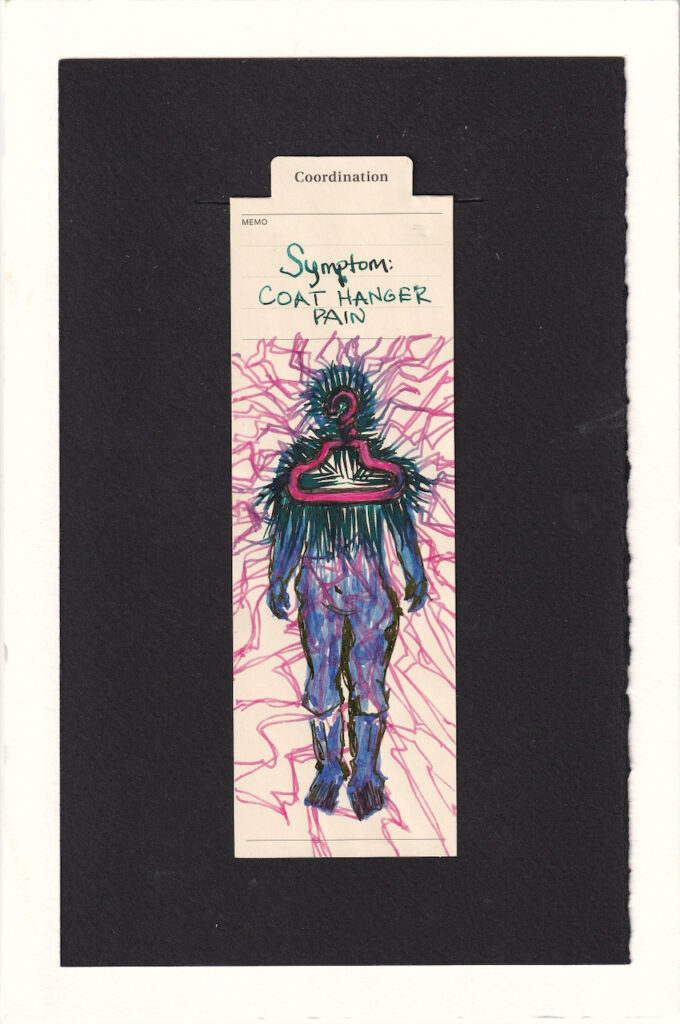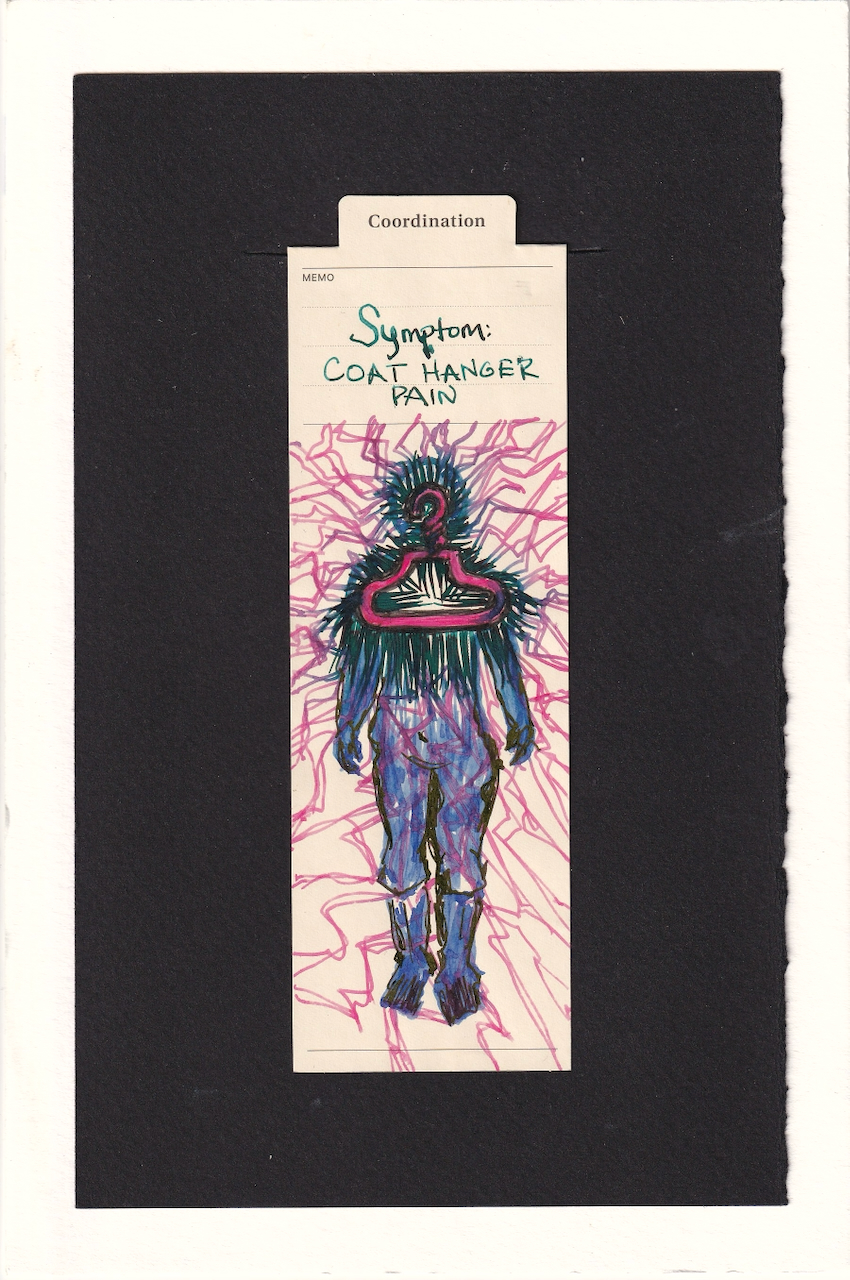
Symptom: Coat Hanger Pain
I only learned about this term very recently, from yumpsuit on the Fediverse. Thank you so much for letting me know about it!
I am almost disproportionately thankful to have a handy description for letting people know what I’m feeling, as well as how to look for ways to try to mitigate the pain. Reading about Coat Hanger Pain resonated deeply, in a way similar to how I often feel when I get a diagnosis: a feeling of relief, connection, community, and hope.
Many people who have not been chronically ill see a diagnosis as a negative. Indeed, many disabled people are never told their diagnoses, and are never told they are disabled. This needs to change, because as Granite and Sunlight explained:
Many people are disabled for a long time before they get a diagnosis which explains what is happening to them, and there is a resistance in the medical profession to giving long-term diagnoses, especially for young people and for women with chronic conditions which lack good treatment options, because of an outdated belief that labels are limiting and they don’t want people to ‘see themselves as disabled’. The fact they are already disabled, already struggling, is why disability justice advocates are trying to help medical professionals change their approach to this. Most people just want answers and context for what is happening to them – not having a name for it doesn’t mean it isn’t affecting their lives. Diagnosis gives people access to context, support and community who can help a person manage the condition better, but these are not built into the medical response to disability. Despite these delays, the person is still disabled all that time, and still needs access to the support and adaptations which can help them live good lives managing their conditions.
For more information about this, I recommend Brianne of No End In Sight’s TEDx Talk, Disease Begins Before Diagnosis.

ahimsa February 10, 2025
@illmarks
For folks who get coat hanger pain, one thing that sometimes works (it works for me) is lying flat with your feet elevated (higher than your head and shoulders)
And I think I've read that some people put their legs up against the wall, with their back flat on the floor, but I can't find a reference to that so please don't rely on my bad memory!